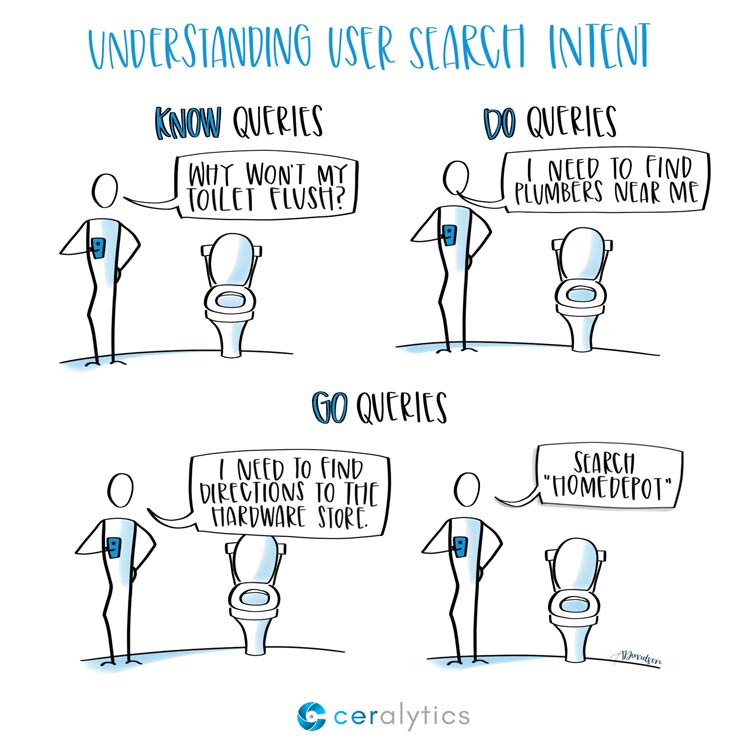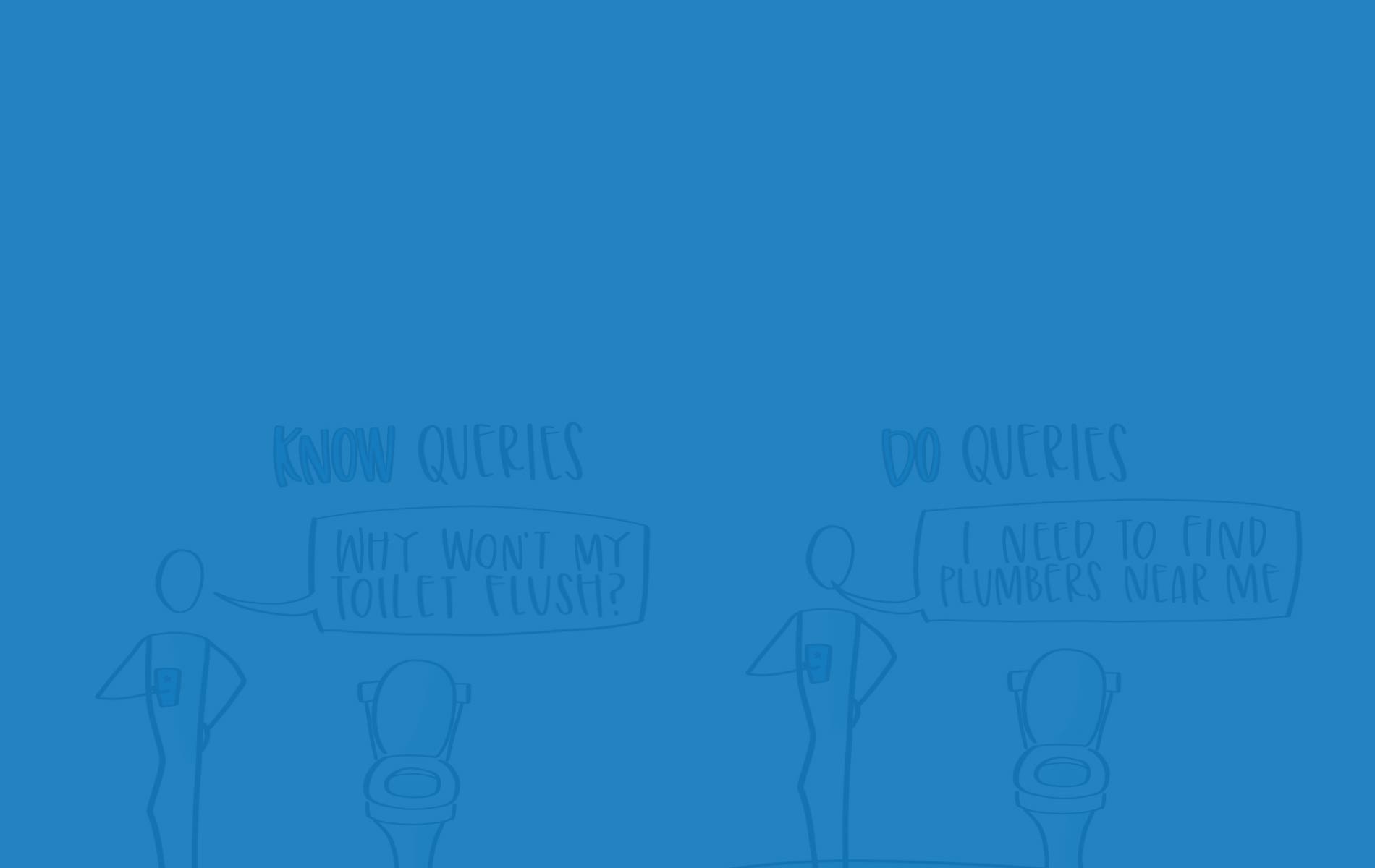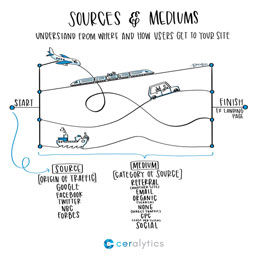What is user search intent?
When someone does a search online, they have an intent to perform some kind of action. Those actions fall into three categories:
- Know queries
- Do queries
- Go queries
Knowing what intent your audience has when they search can help you deliver the right type of content to them at the right time.
Know queries
Know queries are high level and involve your audience wanting to get knowledge or understand the real problem they have. In the example above, the user doesn’t know what’s wrong with the toilet. All they know is that it won’t flush. Their intent is to figure out what is actually wrong with the toilet.
Know queries align with the Awareness phase in the buyer’s journey. Answering these Know queries with your own content will expose the audience to your brand. But understand that the audience is not quite in a place to take an action yet – unless you can guide them there through your content.
An example of guiding someone from a Know query to an action would be answering the question they asked, such as “why won’t my toilet flush?” and then providing them with remedies to the solution, including links to your products that could help them, such as new toilet flappers and chains.
Do queries
Do queries are action-oriented and often include searching for a specific product or service, such as shopping for a toilet flap and chain, or a plumber near them. Audience’s are not looking to read a tome of information about something in a Do query. They’re looking to get the thing they need and be done.
Audiences are looking to take an action with Do queries, so be sure you have an easy way to get them to complete that action – whether it’s a listing of the best toilet flaps you have with reviews and a price-match guarantee, or an easy way for them to schedule an emergency house call from your plumbing company.
Go queries
A Go query is a navigational query. It’s a request to go to a location, whether it’s a brand’s website or a physical location. These queries are usually cut and dry. A user asking how to get to the nearest hardware store is different than the Do query of asking which hardware stores are near them. The Go query is actually getting the directions to that specific store.
Most likely, you will either own the Go query because the audience is searching specifically for you or your location, or you will not be a part of the Go query. You’re not going to show up in search results if someone searches for your competitor’s website (unless you buy AdWords on your competitor’s name, which can actually get results and make your competitor pretty upset.)
What it looks like to get it wrong
Have you ever searched for a recipe on Google and when you clicked through to the recipe itself you had to read through the author’s life story before getting to the actual recipe at the bottom of the page? Sorry to pick on this random result, but take a look at this recipe.
Why is the history of peanut butter cookies on this page before the recipe?!
That’s the result of the author confusing a Do query (peanut butter cookies) with a Know query (what is the history of peanut butter cookies?)
Sorry April, we didn’t mean to pick on you. But next time just get to the point like this recipe.
Next steps
When creating new content, really think about the user’s search intent. Are they looking for information about something (a Know query), or are they looking to take a known action (a Do query)?
Depending on their intent, your approach to the content, including calls to action and the length of your content, should be adjusted accordingly.
About Sketchalytics
Each week we send out a micro-lesson in marketing and/or business.
Our goal is NOT to give you best practices to go out and do what other people do. You can get that anywhere.
Instead, our goal is to give you knowledge that you can apply to your own organization to make the best decisions possible.
If you know anyone who you think would benefit from Sketchalytics, please feel free to share this with them so they can sign up.


